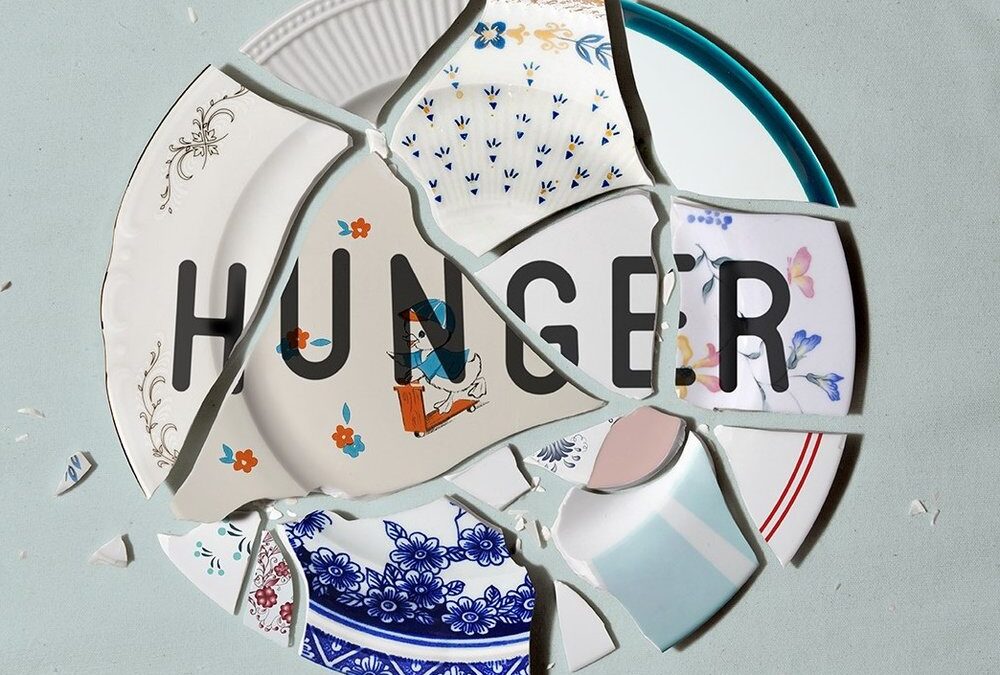I feel incredibly fortunate that I’ve never worried about a single meal in my life. I’ve eaten “government cheese” as well as WIC food when my newly single mother went to school to become a nurse. Even then, I gave little thought to the food that showed up in our kitchen on a regular basis. My mom worked as a waitress on the weekends, so we were able to round out the rest of our diet. I was about 15 years old and brought home my part-time paycheck to help make ends meet. My mom still feels guilt sometimes, especially about how often I babysat my then toddler sister. But I remember that time with gladness and joy. I watched my mom become the person she deeply wanted to be, and I truly enjoyed the time with my sister.
Unfortunately, not all stories are this easy to tell. According to Feeding America, 34 million people lived in poverty in America in 2019. Poverty equates to $25,000, or less, a year for a family of four. These families represent 12 million children who regularly face hunger. In Kentucky, 1 in 6 residents, including 1 in 5 children, are food insecure. The USDA describes food insecurity as “…lack of access, at times, to enough food for an active, healthy life for all household members and limited or uncertain availability of nutritionally adequate foods”. You see, it’s not just about a full belly. The deeper issue is nutrition needed for proper development of a healthy body. Research has shown that food insecurity is associated with health issues like birth defects, cognitive problems, behavioral problems, poor oral health, and poorer overall health along with a higher risk of being hospitalized.
The CDC says a low-quality diet is a major risk factor for death and disability in the U.S. They also say that eating a nutritious, fruit and vegetable rich, diet is important to maintaining a healthy body that works as it should. Not only does food insecurity cause nutritional dilemmas, it can also cause families to choose between needs like housing, utilities, or medical bills and buying nutritious food. According to Feeding Kentucky, of the families utilizing local food banks:
- 67 percent had to choose between paying for utilities and paying for food, with 32 percent reporting making this choice every month.
- 91 percent purchased the cheapest food available, even if they knew it wasn’t the healthiest option, in an effort to provide enough food for their household.
- 65 percent have at least one member who suffers from high blood pressure; 41 percent have someone who struggles with diabetes.
Then, when you factor in the impact that the recent pandemic has had on our communities, the problem’s reach expands. Feeding America says that due to the pandemic, an estimated 42 million people may experience food insecurity in the U.S. during 2021. In 2019, Kentucky food insecurity improved but has gotten worse during the pandemic, significantly exceeding 20% (the highest measurement utilized in the Feeding America map).
In spite of this need, an estimated 40 percent of food in the U.S. goes uneaten. Food is the largest component of municipal landfills. In 2017, more than 40 million tons of food waste was generated and only 6% of that was diverted away from landfills and incinerators. Finding ways to reduce food loss by just 15% would feed more than 25 million people every year!
It’s easy to feel discouraged or even apathetic when faced with such overwhelming statistics. But this is precisely why Glean Kentucky was created. Glean Kentucky gathers and redistributes excess fresh fruits and vegetables to nourish Kentucky’s hungry. Glean Kentucky bridges the gap between programs that work to feed those in need and sources of excess fresh fruits and vegetables. Through gleaning, we help to bring food security to those without it.
September is Hunger Action Month. As we approach this harvest season, we can reflect on our own relationship with food. There are so many things we, as individuals and families, can do within our own communities. Gardeners can grow a little extra and provide it to local food pantries or gleaning organizations. Or maybe they can assist a local organization or church to start a community garden. You can volunteer for gleaning adventures or simply help to serve food to those who come to eat. Every gift of time, talent, or money makes a difference. Together we can create a more equitable and sustainable food system.
